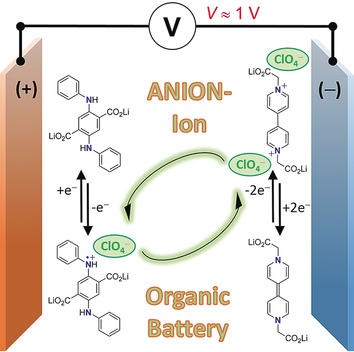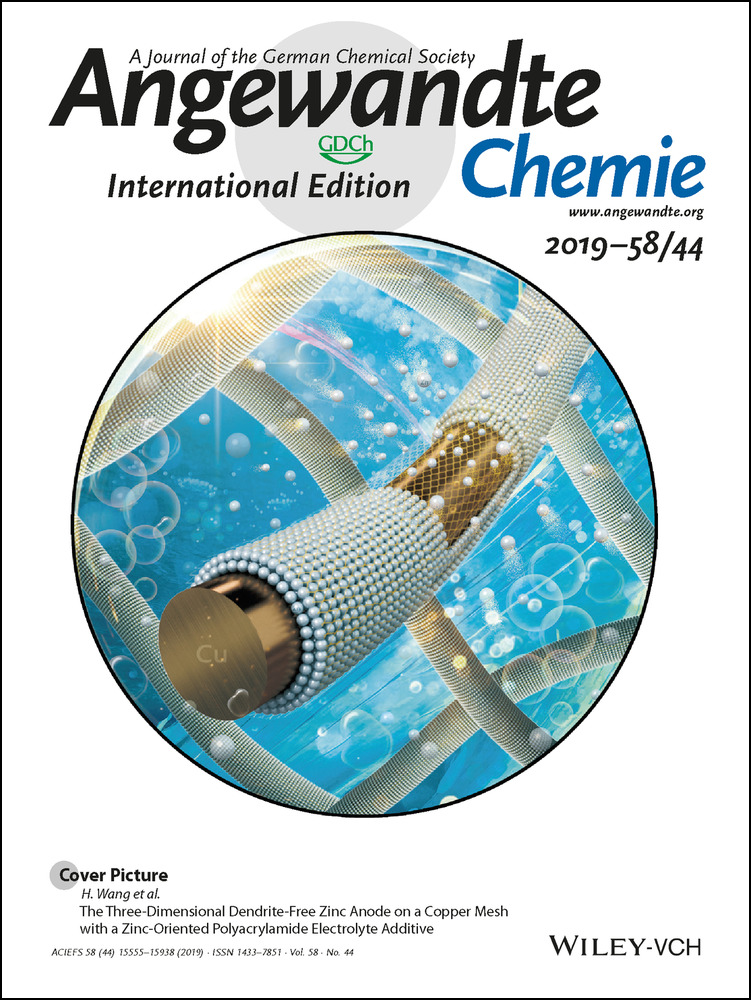Tuning the Chemistry of Organonitrogen Compounds for Promoting All-Organic Anionic Rechargeable Batteries
Graphical Abstract
Charging ahead: The development of anion–ion batteries is possible by combining the benefits of p-type organic redox-active materials and molecular engineering to tune their working potentials. The pairing of an aromatic diamine as the positive electrode with a zwitterionic bipyridinium carboxylate compound as the negative electrode resulted in the assembly of an all-organic anionic battery.
Abstract
The ever-increasing demand for rechargeable batteries induces significant pressure on the worldwide metal supply, depleting resources and increasing costs and environmental concerns. In this context, developing the chemistry of anion-inserting electrode organic materials could promote the fabrication of molecular (metal-free) rechargeable batteries. However, few examples have been reported because little effort has been made to develop such anionic-ion batteries. Here we show the design of two anionic host electrode materials based on the N-substituted salts of azaaromatics (zwitterions). A combination of NMR, EDS, FTIR spectroscopies coupled with thermal analyses and single-crystal XRD allowed a thorough structural and chemical characterization of the compounds. Thanks to a reversible electrochemical activity located at an average potential of 2.2 V vs. Li+/Li, the coupling with dilithium 2,5-(dianilino)terephthalate (Li2DAnT) as the positive electrode enabled the fabrication of the first all-organic anionic rechargeable batteries based on crystallized host electrode materials capable of delivering a specific capacity of ≈27 mAh/gelectrodes with a stable cycling over dozens of cycles (≈24 Wh/kgelectrodes).





